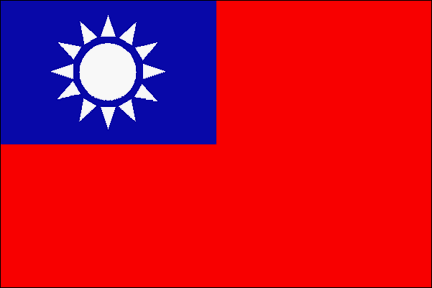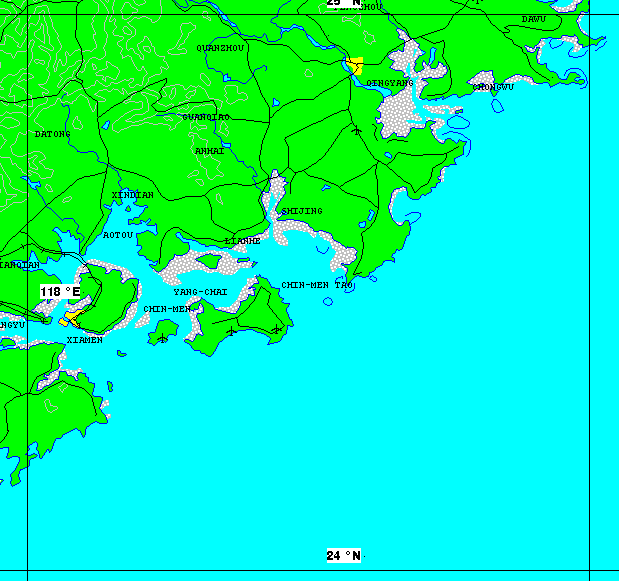



Quemoy (Kinmen)
24�27'N 118�24'E
 Taiwan stations as many as 55,000 troops on the offshore island of Kinmen [Quemoy]. Since the Ming Dynasty, it has been called Jinmen, meaning a "strong gate as if made of gold", for the place was like a gate controlling the sea area. The people share the same traditional festivals with the mainlanders, especially Zhangzhou and Quanzhou people.
Taiwan stations as many as 55,000 troops on the offshore island of Kinmen [Quemoy]. Since the Ming Dynasty, it has been called Jinmen, meaning a "strong gate as if made of gold", for the place was like a gate controlling the sea area. The people share the same traditional festivals with the mainlanders, especially Zhangzhou and Quanzhou people.
The 12 Kinmen islands are located off the southeastern coast of Fujian Province, a key position in the Taiwan Strait that blocks the mouth of the Xiamen (Amoy) Bay and protects Taiwan and Penghu Islands. Kinmen is an archipelago consisting of 15 islets including, besides Kinmen itself, Liehyu (or Little Kinmen), Tatan, and Ertan. Three of the islets are occupied by mainland China; the remainder, under the control of the ROC, have a total land area of 150.46 square kilometers.
Situated in the sea about two kilometers off the coast of Fujian province, Kinmen is separated from Taiwan by approximately 280 kilometers of the Taiwan Straits.The Quemoy Islands are 82 nautical miles west of the Penghu Islands and 150 nautical miles from Kaohsiung in southern Taiwan. The shortest distance from the main island, Kinmen, to communist-held territory is only 2,310 meters.
Although the satellite islets are low and flat, Kinmen itself is a hilly island. Mount Taiwu marks the highest point of the island, rising to 253 meters in the eastern part of the island. Mount Shuhao stretches into the sea where precipitous cliffs have formed as a result of sea wave erosion. Most rivers in Quemoy are short and narrow with unsteady flows, so it is necessary to construct reservoirs for water supply and irrigation.
Kinmen was the site of fierce fighting between Communist and Nationalist forces when the latter withdrew from the mainland in 1949. Until recently closed to outside visitors because of its status as an island fortress guarding against a continuing Communist threat, Kinmen has recently been opened to tourism.

Sources and Methods
http://www.fas.org/irp/world/taiwan/facility/kinmen.htm
Created by John Pike, Tim Brown and Charles Vick
Created by John Pike
Maintained by Webmaster
Updated Saturday, April 01, 2000 4:07:44 AM






 Taiwan stations as many as 55,000 troops on the offshore island of Kinmen [Quemoy]. Since the Ming Dynasty, it has been called Jinmen, meaning a "strong gate as if made of gold", for the place was like a gate controlling the sea area. The people share the same traditional festivals with the mainlanders, especially Zhangzhou and Quanzhou people.
Taiwan stations as many as 55,000 troops on the offshore island of Kinmen [Quemoy]. Since the Ming Dynasty, it has been called Jinmen, meaning a "strong gate as if made of gold", for the place was like a gate controlling the sea area. The people share the same traditional festivals with the mainlanders, especially Zhangzhou and Quanzhou people.

